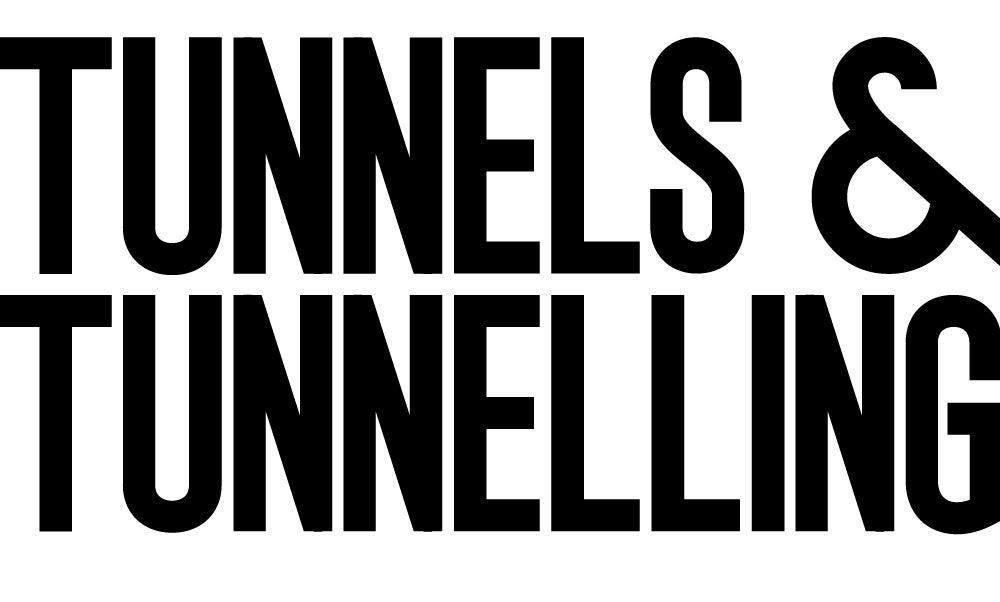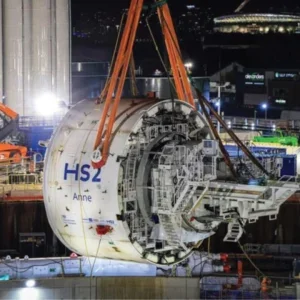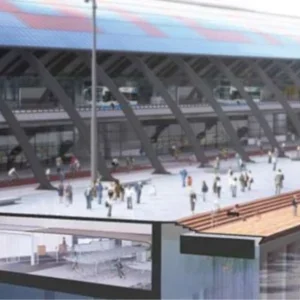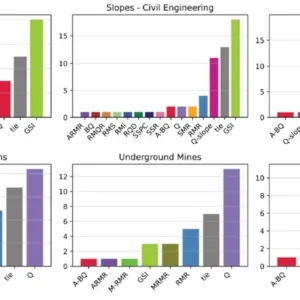If it were not for the Gotthard base tunnel, the Ceneri would have been attracting more attention as one of Switzerland and Europe’s larger tunnel projects. But the 57km length and enormous depth of its big brother to the north has left this 15.4km long sibling in the shade so far.
Things might change now that Gotthard has broken through and work is into its swing at Ceneri. After all, the twin bore drive is not only a major project in its own right, but also an important component in the overall Gotthard railway link.
The Gotthard axis is the biggest highspeed railway tunnel project yet attempted, and one of the most significant in the world – a forerunner of a series of deep level mountain rail links that can be expected in the 21st century. It is one of four major Alpine connections, joining the shorter 34.6km-long Lotschberg tunnel already completed within Switzerland, the Brenner Pass base tunnel just starting between Austria and Italy and, eventually, the Lyons to Turin connection via the Frejus pass between France and Italy.
When complete, Ceneri and the Zimmerberg tunnel near Zurich will cut another ten minutes from the high-speed train journey time between Zurich and Milan. It is a critical saving; together with the 50 minutes that the Gotthard cuts from journeys this makes a complete hour, giving much better connection with the hourly timetable structure of the growing European high-speed train network. From 2019 when Ceneri is due to open, the highspeed routes will be properly synchronised. Gotthard opens three years earlier.
Ceneri will have gradients no greater than the Gotthard’s 6.7 in a thousand, which means it can also cope with the 4000t capacity 160km/hour freight services which are an important part of the overall economic and environmental justification for construction of the route. Existing trains are 2000t and require several locomotives to make the high climbs.
The new tunnel lies on the south part of the route in Italian speaking Switzerland, passing under Monte Ceneri, which separates the border city of Lugano and its lake, from Locarno and Bellinzano to the north. The mountain rises to 1100m, less than half the 2500m of the high Alps but still a respectable rock mass to drive through. It is crossed at present by a winding railway route with a high tunnel at the peak.
“This is the southern edge of the Alpine block,” says Paolo Vicentini, a site manager in client AlpTransit Gotthard’s project team. AlpTransit is the special company set up by Swiss Federal Railways to oversee construction and commissioning of the entire axis.
“It is where the African tectonic plate crashes into Europe and is pushed down underneath.”
Like the larger Gotthard, Ceneri will carry the high speed and heavy freight trains in two single-track tunnels, with minimum diameters of around 8.5m before, typically, a 250mm lining. These bores will be separated by 40m of rock with cross passages every 325m for emergency access, and for tunnel and signalling service locations. Each passage will be sealed with heavy pressure doors that can be opened by escaping passengers in the event of fire or other disaster, allowing them through to the other bore where they will be picked up and carried to safety.
Unlike Gotthard however, the Ceneri does not require any of the big multifunction stations used for both escape purposes and additional ventilation. Its length means that many emergencies can be dealt with by trains continuing to the outside before stopping.
There will be a large cavern at the centre however; from this point the main drives have begun, two south and two northwards.
Opting for drill and blast
The tunnel is being constructed by drill and blast in both directions, the result of an alternative bid option offered to contractors. The client had thought perhaps part of the excavation could be driven by TBM on the southern section but the full length of the route was never going to be suitable for machine driving, in contrast to the mainly TBM drives of the Gotthard.
Boreholes were used to investigate the geology of the tunnel and an early 5.5m diameter exploratory bore from the village of Sigorino, which lies about half way along the route length. It was made in 1999 to 2002. Results indicated the rock to be mainly fairly hard orthogneiss and schists. There is also glacial Swiss molasse near the portals.
Cover is relatively high, but topping out at 1040m rather than the 2000m of the Gotthard; this means high temperature problems and squeezing ground are far less of an issue with a maximum of 19 degrees C expected.
The exploratory tunnel was intended from the beginning to be part of the construction access, though a second larger side tunnel was bored alongside it between late 2007 and November 2008. The Consorzio Monte Ceneri, a joint venture of CSC and two other contractors, made the 9.7m diamter bore using a refurbished Robbins main beam TBM and completed the 2.4km long adit in just ten months. It is simply lined with shotcrete.
Robbins says that it is the first time 19-in disc cutters were used on AlpTransit and the additional pressures achievable significantly reduced cutter wear while speeding up advance rates to as much as 16m a day average. Maximum cover for the side tunnel was 600m.
The two parallel adits are now the key access point for much of the work on the tunnel which is being driven in four main drives from a large central cavern. Two other smaller contracts are also underway for difficult portal work at either end, in one case on the north side passing underneath a busy highway and at the other end forming an access cutting in a relatively crowded residential area.
Preparation work for the drives under an early contract has been underway since 2006, creating site facilities, canteens and offices, a small road network and installing some crushing and spoil sorting plant at the access tunnel entrances and in a small tight area around it. Such are the space constraints that a railway loading and unloading point has to be sited about 1km away. “A conveyor links the railhead with the immediate portal,” says Vicentini.
The plant is being used to screen and divide spoil into three categories, A for use in aggregate, B for clean waste which is being disposed of close by, and C for material that has to be removed for alternate disposal.
Unfortunately, says Vicentini, most of the rock is not expected to be good enough for aggregate and there is therefore a need to import material for concrete making. Around 60-80 per cent of the aggregate needs will be supplied from outside, mostly brought in by rail, and conveyored from the offloading point to the Sigorino worksite and then into the tunnel. Trucks will bring in cement for concrete mixing inside the tunnel.
To cope with the constraints and for logistical reasons, much of the tunnel material supply, and some spoil crushing, will be done inside the mountain. “It saves space and is better too for delivery,” says Vicentini, “because the concrete has less distance to travel and less danger of going off.”
Concrete batching plants have been installed in two parallel 20m high caverns, each with a 265m2 cross-section and interconnected with cross passages.
The passages link the large central caverns in a connected square on plan, for plant movement and to serve also as a central ventilation distribution ring. It is fed by large fans at the end of ducts in the first exploratory tunnel, while the main service tunnel is the exhaust path. Individual tunnel drives draw their air from the central ring.
Forming the caverns was final task for CMC during the construction of the adit, to make way for the Consorzio Condotte Cossi consortium, a joint venture of Condotte D’Acqua and Cossi, which won the main contract for the work in spring last year for CHF 987M (USD 1.05bn).
Hanging platforms
When T&TI was on site early last autumn the caverns were complete and much of the plant was installed and being commissioned in the caverns.
A first of four Rowa hanging platform support trains was complete for the drill and blast operations on the four drives.
The increasingly widely used Rowa platforms make good sense, says Vicentini, keeping fixed plant like fans and conveyors out of the way in the tunnel’s upper section while mobile equipment like loaders, excavators, the explosives transport tanker and drill machines can move freely.
The contractor is using brand new Sandvik 1300 three-boom rigs for the face work and smaller two-boom BT 820 rigs for the cross passages and other incidental work, with spoil crushed and then transport by conveyor. Spoil is moved out by conveyors along the service tunnel.
Three of the Rowa platforms were complete in February and a fourth was being bolted into place for the second of the northern drives, bringing the tunnel excavation work to full production level. The heavy duty steel frames can move along suspended rail, supported on chains bolted into the rock wall of the tunnels.
“The two southern drives were set up first because they are on the critical path,” says Vicentini “They are not the longest drives at just 6km but there are some anticipated rock difficulties.” Environmental constraints under low cover in the southern section will also restrict blasting times, particularly under residential zones, and this will slow progress at the end of the drives.
Two fault zones are expected in the metamorphic gneiss, one fairly early on this year and another later.
The southern drives are each 6km long while the two northward drives are 8.1km. Around 760m more is driven in from the northern portals under a separate contract and another 340m in the south. A 220m long cut and cover artificial tunnel completes the southern end of the project.
So far 11km or just over 28 per cent of the overall 39.8km of tunnel has been driven, mostly on the main drives and including the two Sigornio accesses.
Early setback
Unfortunately the early work has brought a tragedy, with a sudden rockfall in September during rockbolting operations. One worker was struck by a large block which fell around 8m from the tunnel roof and despite first aid, he died later in hospital.
No more details have been released as the incident is being investigated by the local Ticino Canton public attorney. AlpTransit says it is not clear yet how it happened.
The southern drives must take a curving path at the end. This is because the tunnel will at first exit to the west of Lugano at Vezia, to link into the existing Swiss-Italian border rail crossing. New high-speed rail links through Lugano will eventually allow a direct connection into the tunnel and for this two blind stub ends for the straight tunnel line will be excavated and left ready for eventual connection.
“Finance has not been agreed for that yet,” says Vicentini.
Breakthrough on the southern drives is scheduled for 2016, and somewhat earlier on the northern drives.
Meanwhile, complex work at the portals had already begun before the start of the main drives. Most difficult is the northern portal where the tunnel alignment carries it at a shallow depth underneath the important A2 motorway running along the northern face of the mountain. It is the main autostrada from Gotthard to Lugano and on to Italy.
The contract for the first 760m of each bore is also complicated by an addition to the project. This was made at the insistence of the local canton, which wanted a connection to Locarno for the local trains.
At present they run on the existing mountain line and this traverses the north face on a steep incline which heads towards Bellinzona. The local trains must run on there before taking a connection back to Locarno.
Because of its lower exit level, a curved link can be included outside the Ceneri exit, which allows trains to head directly on to the Locarno route. The additional line enters the new tunnel in one of the two portals, which is doubled up to allow it; the two tracks through the arched entrance are separated by a partition.
Inside the mountain there is also a crossover tunnel between the two bores connecting into a wider cavern area on the other side.
Coping with soft ground
Much of the work is in hard rock and can be done by straightforward drill and blast but Contractor Consorzio Matro Sud faced a difficult task getting though first 50m of soft glacial ground when it began in October 2008. It had to drive the two portals just 8m underneath the motorway, an especially difficult job for the wider twin track entrance.
Extensive checks and monitoring were needed for movement on the motorway, which could not be shut done while the tunnel was driven. “The controls were more stringent than normal at the insistence of the national motorway administration,” says Vicentini.
To do the job, the consortium has used a horizontal jetgrouting system to create an arch ‘umbrella’ in the ground. A double row of 600mm diameter grouted cylinders forms the main arch and this is continued at the side with a single row over the abutment sections.
Within the single row ‘umbrella’ small side drifts were excavated 6m high and 4m wide at the bottom, with a shotcrete lining. Much of this space was then filled with reinforced concrete to make massive side abutments from which the tunnel’s main arch could spring later.
With those made a top heading could be excavated to the level of the abutments using an excavator. To stabilize the face it was reinforced with drilled and grouted passive anchor rods that were then excavated out along with the glacial material.
“With the excavation made it was possible to fit steel reinforcement arches and concrete the thick arch section,” says Vicentini. A thinner concrete arch invert completes the excavated section that will finally be given an inner tunnel lining.
Work on the first 30m long section has been done in three overlapping phases. A further 18m section passes through a firmer weathered rock transition zone before the harder gneiss of the mountain. Here grouted steel tubes were sufficient to make the umbrella arch.
There has been some settlement on the motorway during the work, a maximum of 140mm, which has triggered repair work for the carriageway. “The threshold was 120mm,” says Vicentini.
Currently the drives are complete in the soft ground and work is proceeding with the rock drives to form the main bores, the crossover passage and the wider cavern sections needed at each end of the crossover.
Meanwhile in the south, work is complete on forming approach cuttings for the portals and the underground excavation of the first 340m of tunnel has just begun. Apart from a curving alignment this is straightforward enough, but there are severe local community and environmental constraints. The area is part of the well-off Lugano suburbs and sensitivities to vibration are high, which means tight limits on blasting levels and timing for contractor the Consorzio Portale Vezia, which comprises contractors CSC Lugano and Pizzarotti Bellinoza. Work has also had to avoid damage to a classical villa nearby.
Lining work will complete the two portal sections.
Attention is mainly on the central drives however, which will all be in full production by spring on a timetable break through in 2016.
Lining work on the southern drives will begin in 2013 while tunnelling continues but in the northern drives it will wait until excavation is complete in around 2014.
After that comes fit-out of electrical and signalling equipment. But that will be decided later.
The northern portal passes just underneath the A2 motorway Jet grouted umbrella under motorway South portal approaches at Vetzia were close to residences A very thick lining is needed when passing under the motorway Cover on Ceneri is up to just over 1km Central access cavern from which main drives begin Ceneri and Gotthard together will save one hour on journey times






